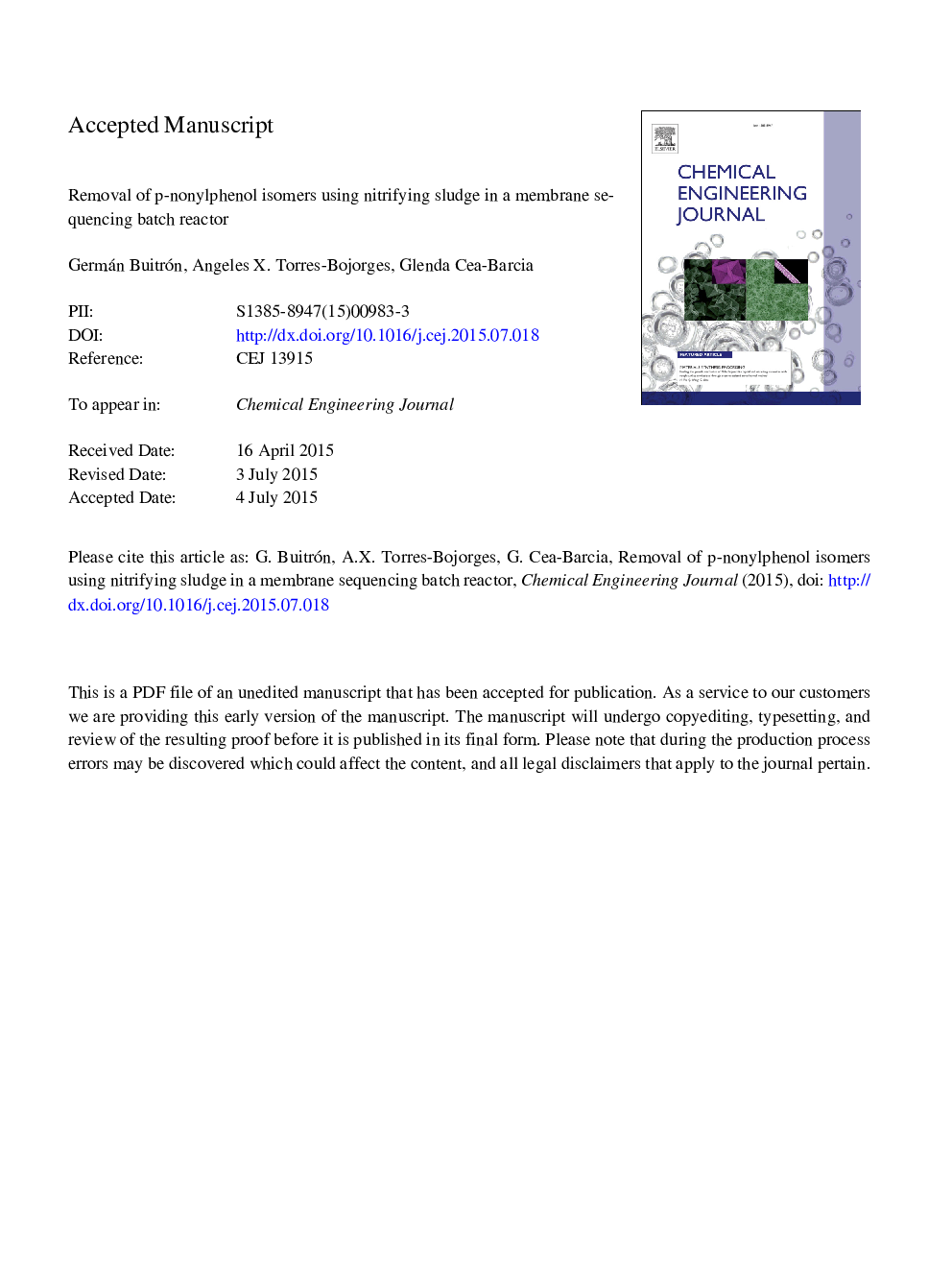| Article ID | Journal | Published Year | Pages | File Type |
|---|---|---|---|---|
| 6584371 | Chemical Engineering Journal | 2015 | 38 Pages |
Abstract
The aim of this study was to assess p-nonylphenol removal mechanisms under nitrifying conditions in a bioreactor system. The removal of a technical mixture of p-nonylphenol isomers was evaluated in a membrane sequencing batch reactor without the addition of an organic carbon source in enriched nitrifying sludge. The p-nonylphenol concentration was quantified in the liquid and solid phases to accurately differentiate between biodegradation and sorption mechanisms. The predominant removal mechanism was p-nonylphenol biodegradation (62%), followed by sorption, which resulted in a total removal of 96%. In addition, ammonium-oxidizing microorganisms controlled the biodegradation of p-nonylphenol, and 1,2-benzenedicarboxylic acid, mono(2-ethylhexyl)ester was identified as the main intermediary metabolite. These results suggested that co-metabolic biodegradation by heterotrophic microorganisms is necessary to completely mineralize p-NP isomers under nitrifying conditions. This study provides an important contribution to existing knowledge of nonylphenol biodegradation.
Related Topics
Physical Sciences and Engineering
Chemical Engineering
Chemical Engineering (General)
Authors
Germán Buitrón, Angeles X. Torres-Bojorges, Glenda Cea-Barcia,
